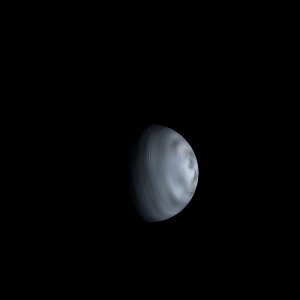|
|
Space Astro
|
Info for exoplanet "Napima Mi"
| Scientific (actual) data |
|---|
| Name | HD 114386 c |
| Planet status | Confirmed |
| Mass sini | 1.19 |
| Orbital period | 1046 |
| Orbit eccentricity | 0.06 |
| Discovered | 2011 |
| Updated | 2011-09-12 |
| Publication | Submitted to a professional journal |
| Detection type | Radial Velocity |
| Star name | HD 114386 |
| Right ascension | 197.66° |
| Declination | -35.05° |
| Mag v | 8.73 |
| Star distance | 28 |
| Star metallicity | 0 |
| Star mass | 0.75 |
| Star radius | 0.76 |
| Star sp type | K3 V |
| Star age | 2.19 |
| Star temperature | 4819 |
| Wikipedia article | HD 114386 c |
Back
| |
| Fictional info (?) |
|---|
| Suggested name | Napima Mi |
| Planet type | Cold planet |
| slightly lengthy voyage. |
| Atmosphere | Ammonia | 80% |
| Helium | 13% |
| Carbonyl sulfide | 5.3% |
| Carbon dioxide | 1.5% |
| Argon | 0.2% |
| Hydrogen | 0.00023% |
| Atmospheric pressure | 0.0028 bar |
 |
| No known satellites |
| Google search for Napima mi |
|
Website by Joachim Michaelis
|
|
|
|